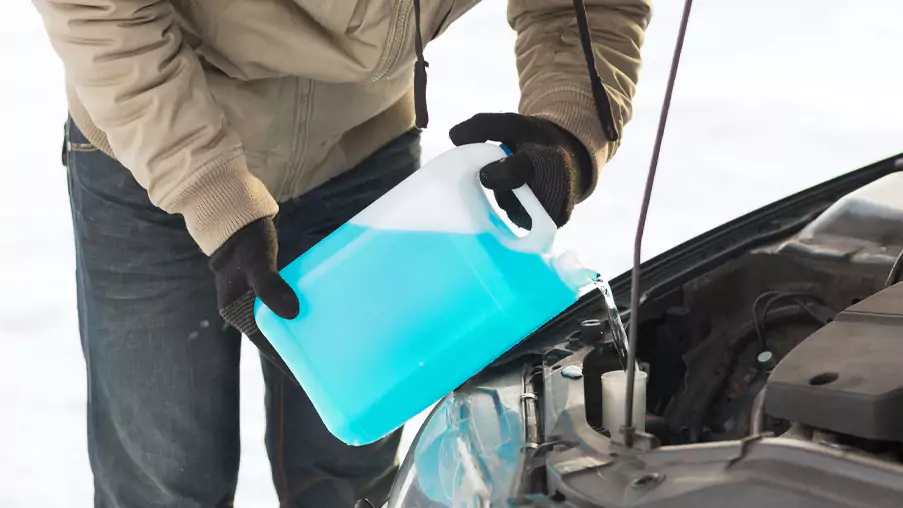How to Refill Windshield Wiper Fluid
May 7, 2024
Windshield wiper fluid, also known as windshield washer fluid, is an essential automotive fluid that keeps your vehicle’s windshield clean and clear.
So, how do you refill Windshield wiper fluid? This fluid is used in conjunction with your vehicle’s windshield wiper system to remove dirt, debris, and other obstructions from the windshield, improving visibility and safety while driving.
There are different types of windshield wiper fluid, including standard water-based solutions, concentrated formulas, and even specialized fuild for extreme weather conditions.
Regularly checking and refilling your windshield wiper fluid is crucial to ensure your vehicle’s wiper system functions properly and keeps your windshield clear, enhancing your driving experience and overall safety on the road.
How to Refill Windshield Wiper Fluid – A Seven-Step Guide
Here is a step-by-step method to refill windshield wiper fluid:
Step 1: Gather Your Supplies
Make sure you have all of the necessary materials before you start. You will find windshield washer fluid in most gas stations and car parts shops.
Alternatively, you can mix water with concentrated windshield washer fluid. Use a scoop to carefully pour the liquid to prevent spills. Keep a clean cloth or paper towel nearby to quickly clean up any accidental drops.
Step 2: Locate the Wiper Fluid Reservoir
Modern vehicles often have windshield fluid tanks situated beneath the bonnet, near the engine. Search for the container that shows moving window wipers. If you cannot locate it, the owner’s handbook accompanying your vehicle will have detailed instructions on its location.
Step 3: Check the Fluid Level
If you look at the sides of the tank, you will be able to see the amount of fluid it contains. Some reservoirs use dipsticks to indicate the water level, while others use fill line indicators to signal when the reservoir is full.
Ensure the tank is full before checking if the windshield washer fluid sprays. One possible reason for failure is a malfunctioning sensor or obstruction in the lines. Even with a full tank, the washer fluid may not flow if the low fluid warning persists.
Step 4: Open the Reservoir Cap
First, remove the tank top carefully, then flip it over to check that the contents are empty. Take your time to avoid accidentally causing damage to any of the parts.
Before moving on to the next step, it is important first to check the condition of the cap. In the event that the cap seems to be damaged or breaks while being inspected, it needs to be changed to safeguard the integrity of the system and avoid fluid leaks or contamination.
It is vital to perform routine maintenance on tools and to use caution while handling their components to ensure that they function properly and without risk.
Step 5: Add Wiper Fluid
Immediately refill the windshield washer fluid in your vehicle. This liquid, also referred to as car windshield cleaner liquid, is crucial for protecting your screen from road debris. It helps you to keep your windshield clean.
Keep in mind that there are several types of windshield wiper fluid available. Some offer better cleaning performance than others, and certain varieties are formulated for specific regions or weather conditions. Select the one that aligns with your driving habits and the environment you encounter.
Add windshield washer fluid to the tank in a cautious, measured manner. It doesn’t matter whether you use a spoon or pour it directly from the bottle; the key is to avoid spills. Continue to fill the jar with liquid until the line reads full. Avoid overfilling the windshield wiper fluid tank in your vehicle by using your best judgment if there is no fill line.
Step 6: Close the Reservoir Cap
Tighten the tank cover after pouring the windshield washer fluid to prevent leaks and contamination.
Start your vehicle and test the windshield washers after closing the cap. Press the washer button or pull the washer switch to spray windshield fluid.
Check for leaks in the tank and lines and spray the window evenly to remove dirt and debris. A lack of spray or a weak spray may indicate an issue with the washer pump, pipe, or nozzle. This should be rectified immediately to ensure good visibility while driving.
Step 7: Test the Wipers
Ensure the wipers work at total capacity once you’ve filled up the tank. The front windshield wipers are operated by quickly pushing the end of the stalk that guides the wipers. If your car has rear wipers, you can turn them on by pulling the stalk in the same direction you’re going.
To get the optimal coating, you may adjust the spray pattern using a needle or your hands, whatever suits you best.
If you follow these measures, you will be able to ensure that you have excellent visibility when driving, regardless of the weather. Make sure that the oil in your windshield wipers is checked and maintained regularly.
Things You Must Not Forget When Replacing Windshield Wiper Fluid
Changing the windshield wiper oil is essential for auto maintenance. When changing windshield wiper oil, remember these three things:
- Never forget to check your windshield wiper fluid, particularly before lengthy travels or in winter when it’s more prone to freeze. Always check the fluid level visually and add extra as required to keep your wipers working.
- Window wiper fluids behave differently. Use the oil recommended by your car’s manufacturer. This ensures it works with your car’s system and prevents harm. Consult your owner’s manual or a specialist to determine the right fluid.
- Different window wiper oils may be needed depending on your weather. In winter, you may wish to apply a fluid that prevents freezing and makes it easier to see. However, a fluid with additional cleaning ingredients may remove stubborn bugs and road filth in summer.
Remember these three things to ensure your windshield wiper system always works correctly and keeps you safe while driving.
Final Thoughts
Every driver should know how to refill windshield wiper fluid for regular upkeep. There are only a few easy steps needed to finish this job.
First, ensure you have the right oil for your windshield wipers. The wiper fluid tank is under the hood. Remove the cap on top of it.
The next thing to do is fill the tank to the Fill mark. Make sure the hood is closed and the cap is back on. This will keep your glass clean, making it easier to see and safer for you. If you regularly check and replace your windshield wiper fluid, your windshield will stay in good shape. You will be good to go if you do this as part of your routine car care.
Keep your windshield clear and your vision sharp. Refill your windshield wiper fluid today and ensure safe driving with NuVision windshield washer fluid.







